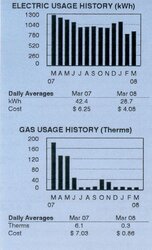These gassifiers seem to be a long way from plug and play items. Storage and its added complexity is a huge issue. It looks like going into idle can cause huge creosote issues. No doubt gassifiers are the way of the future, but we've still got a ways to go. Anybody out there working on a pressurized 500 gal unit? There's no way I could replace my clunker junker system for $10,000. If anybody could post a photo of a $10,000 pile of firewood I'd like to see it. Thanks for everybody out there helping to make the future easier for the rest of us.
Thanks to all you gassifier guys for breaking the way for the rest of us.
- Thread starter atlarge54
- Start date
-
Active since 1995, Hearth.com is THE place on the internet for free information and advice about wood stoves, pellet stoves and other energy saving equipment.
We strive to provide opinions, articles, discussions and history related to Hearth Products and in a more general sense, energy issues.
We promote the EFFICIENT, RESPONSIBLE, CLEAN and SAFE use of all fuels, whether renewable or fossil.



